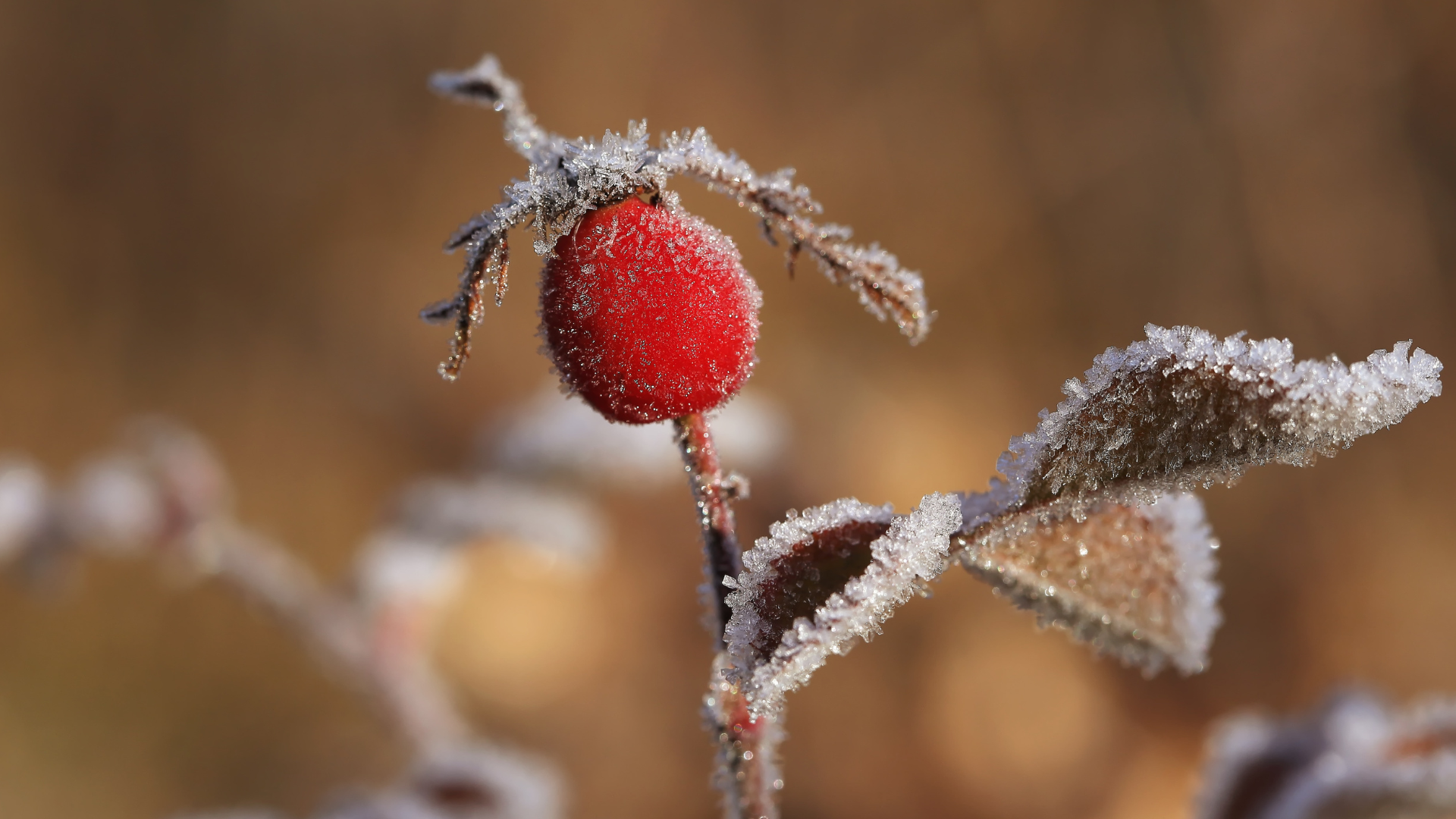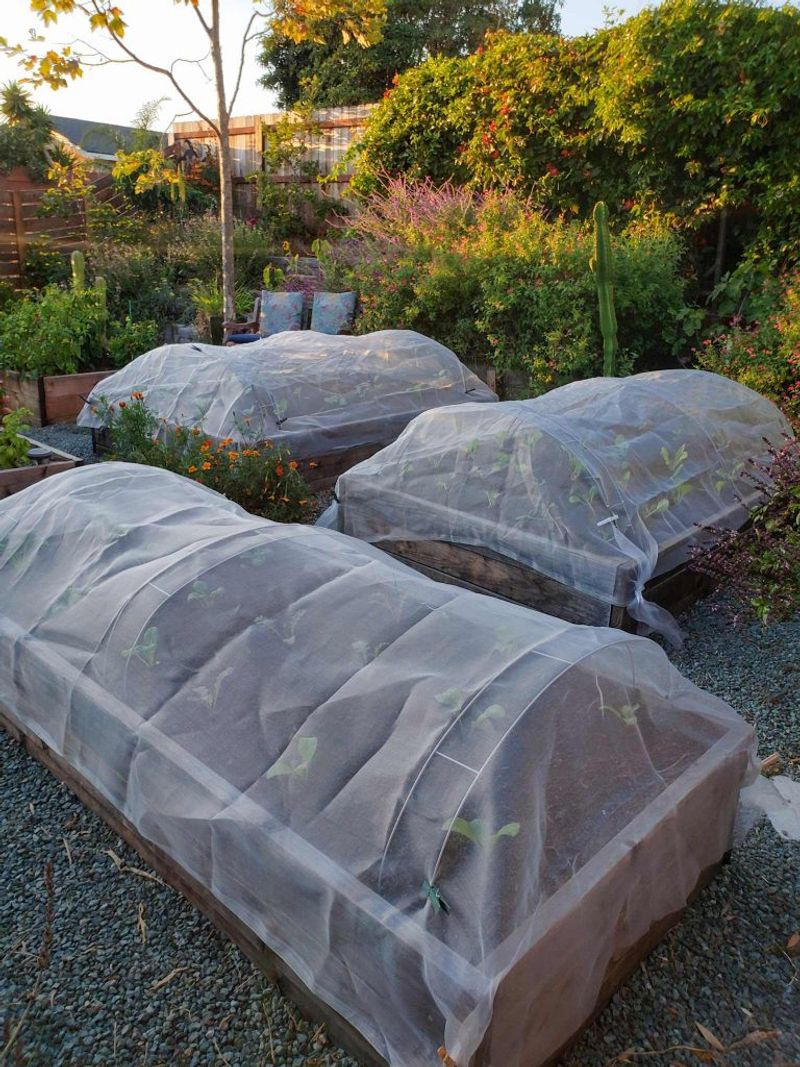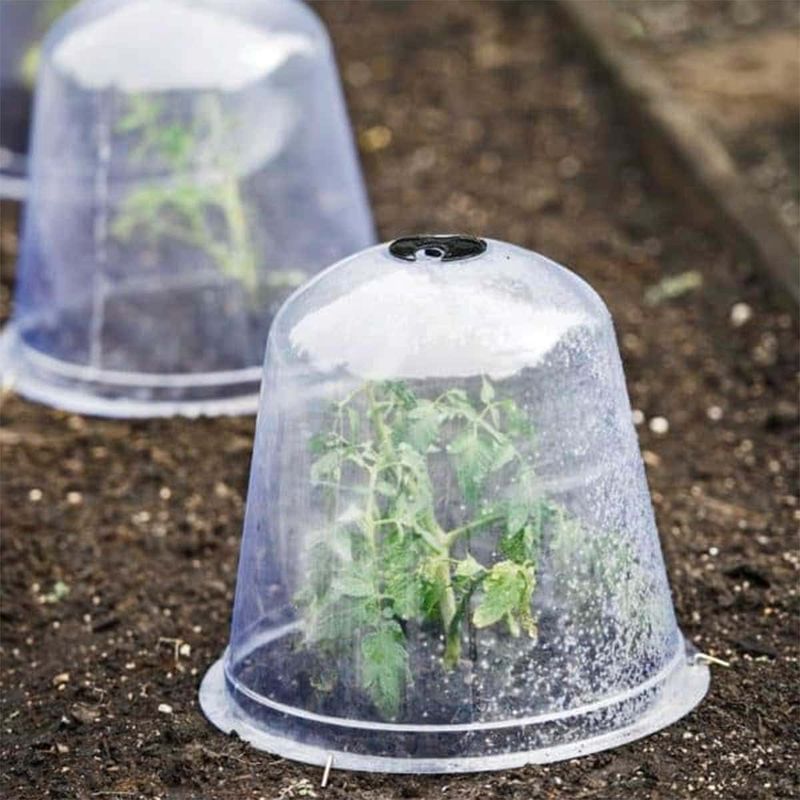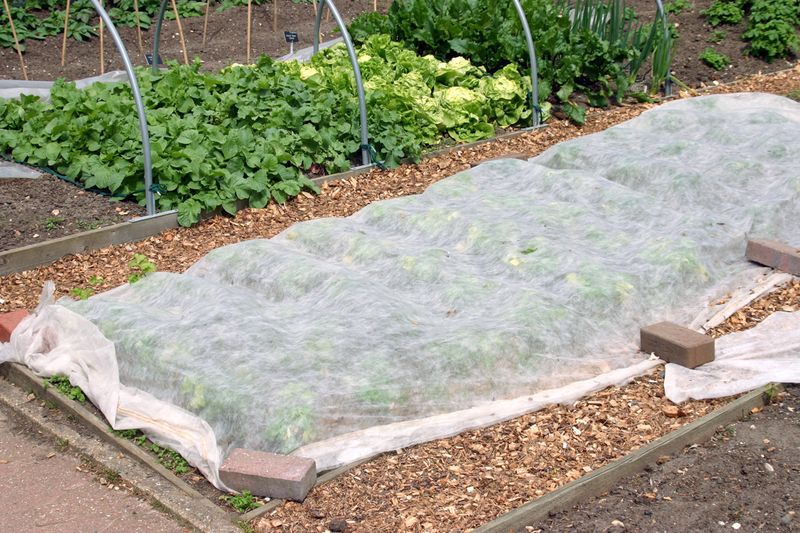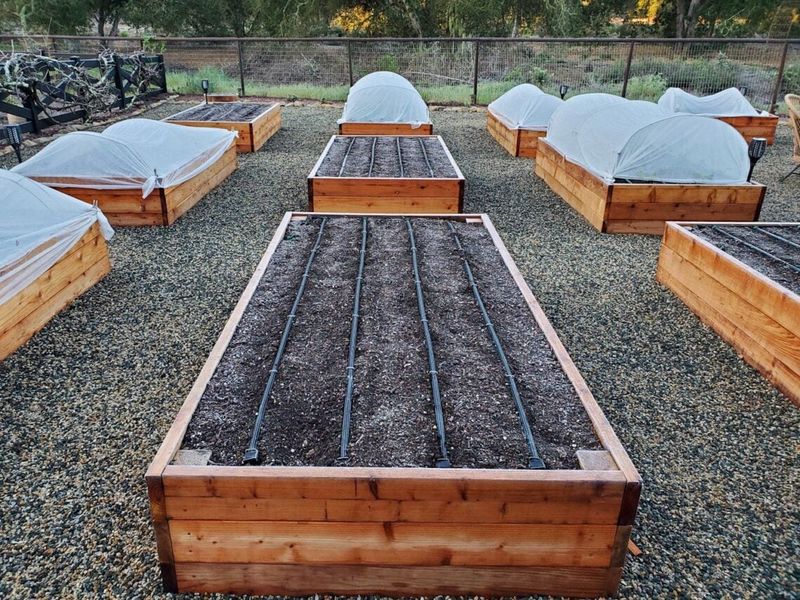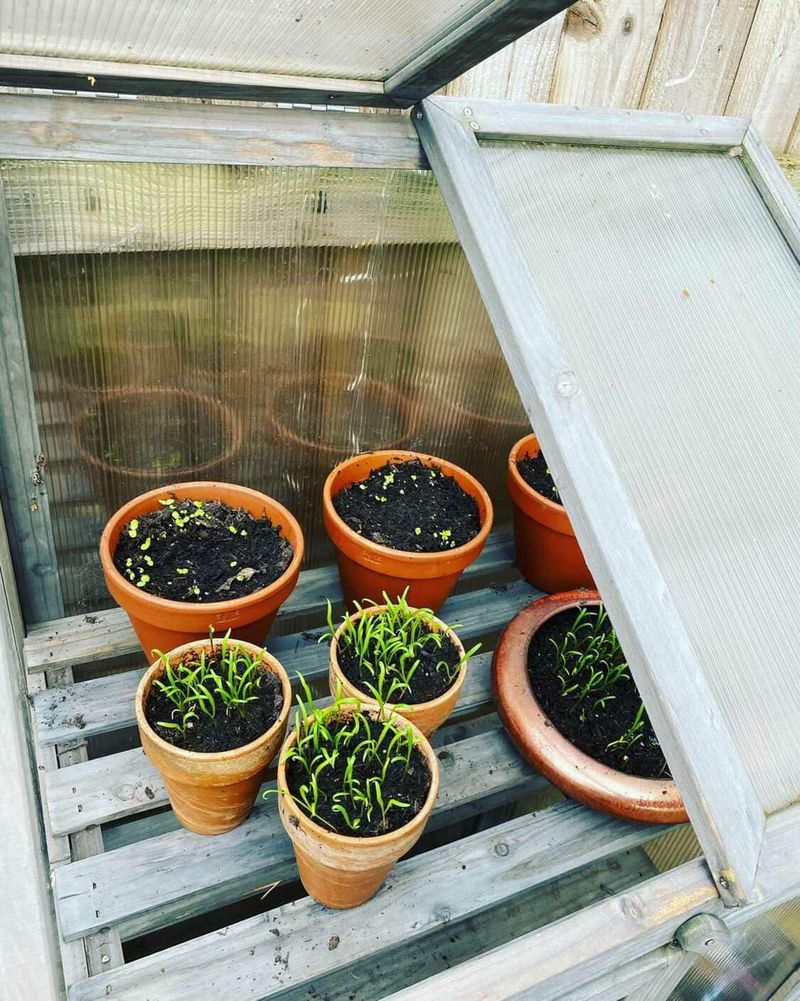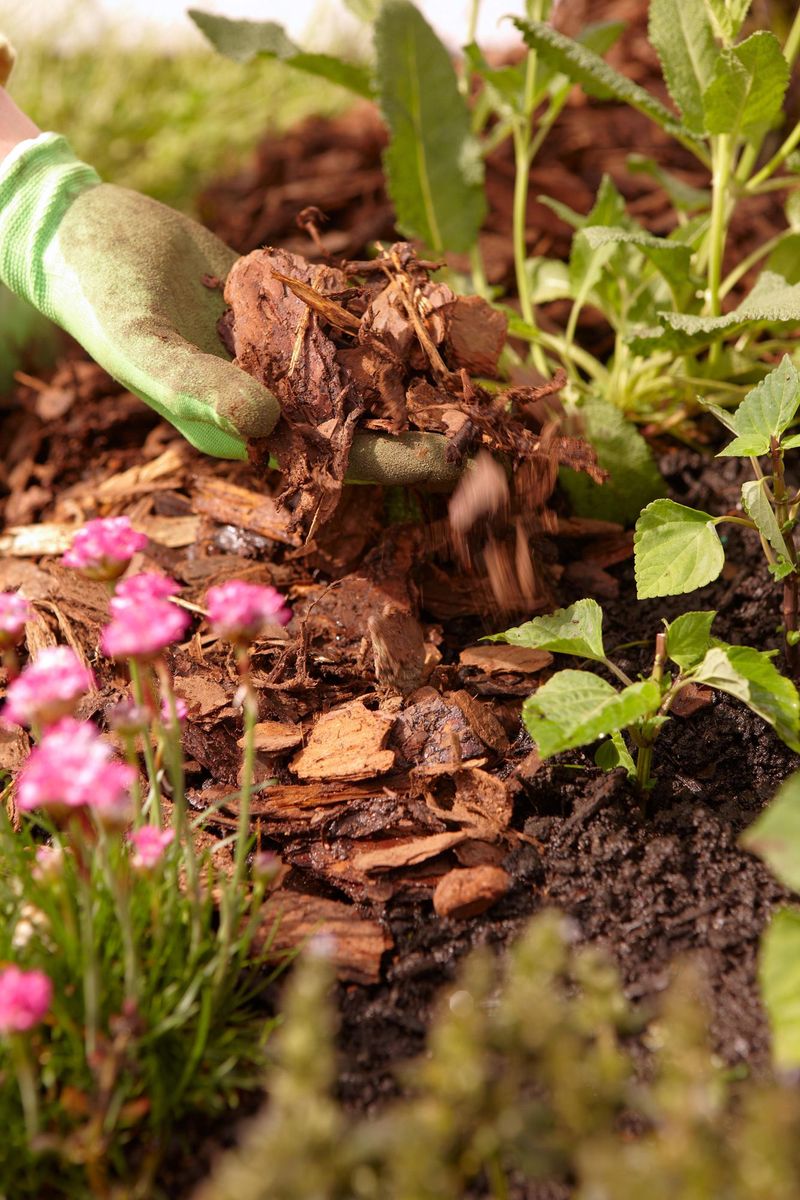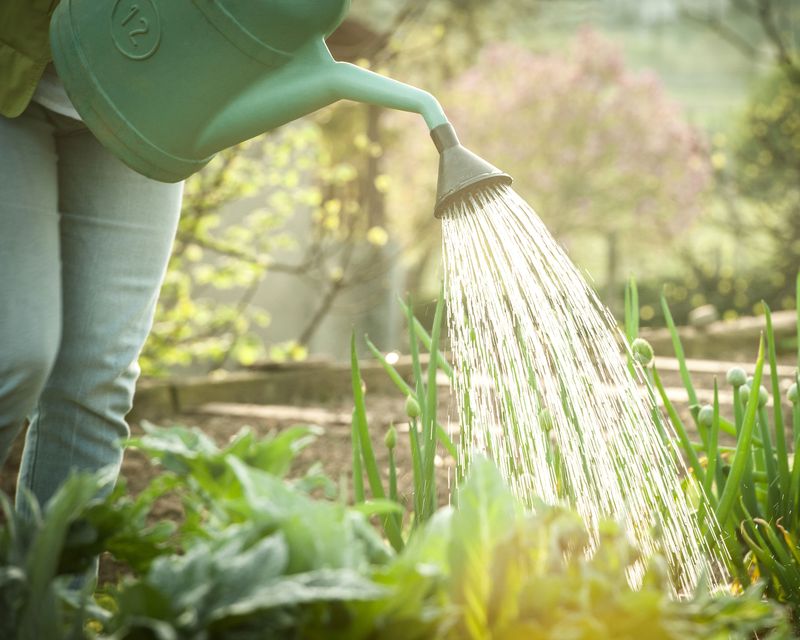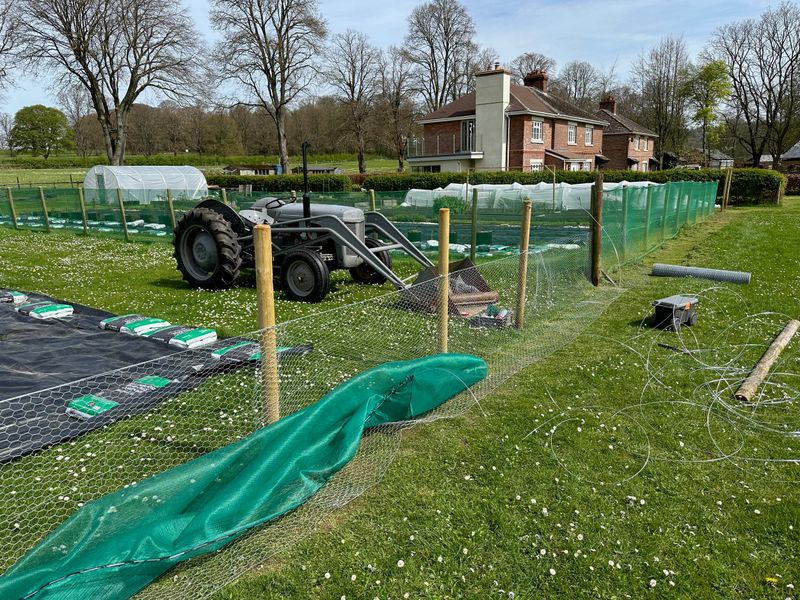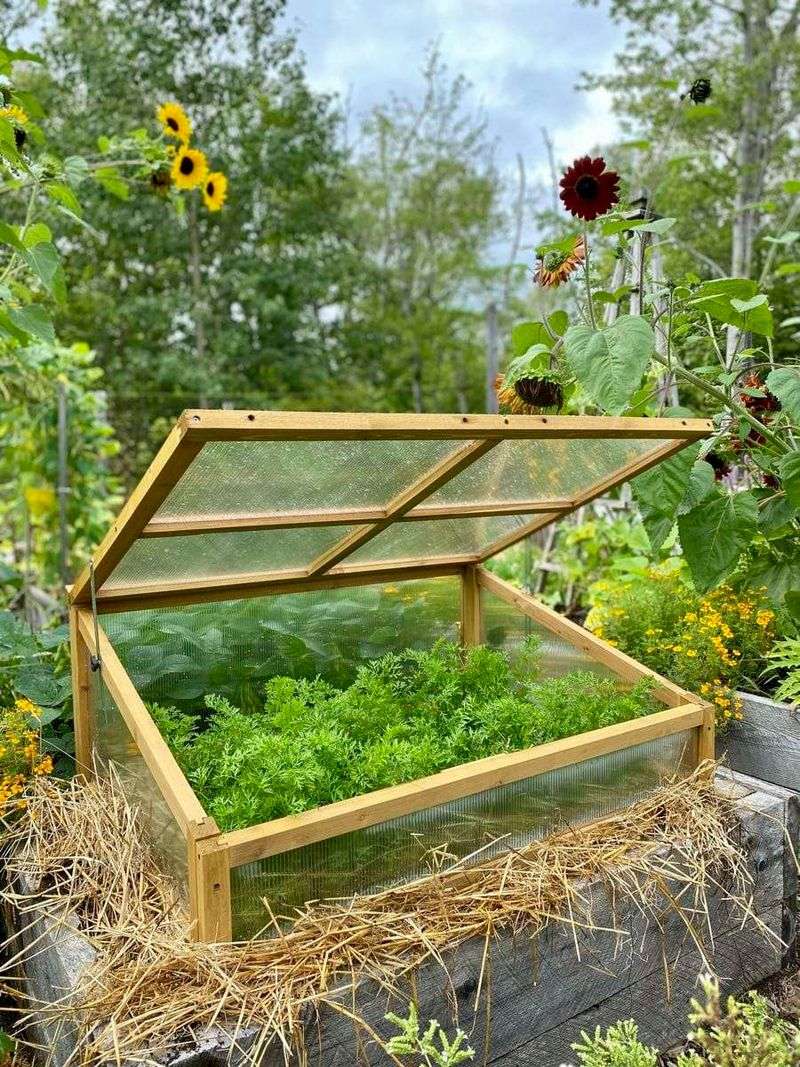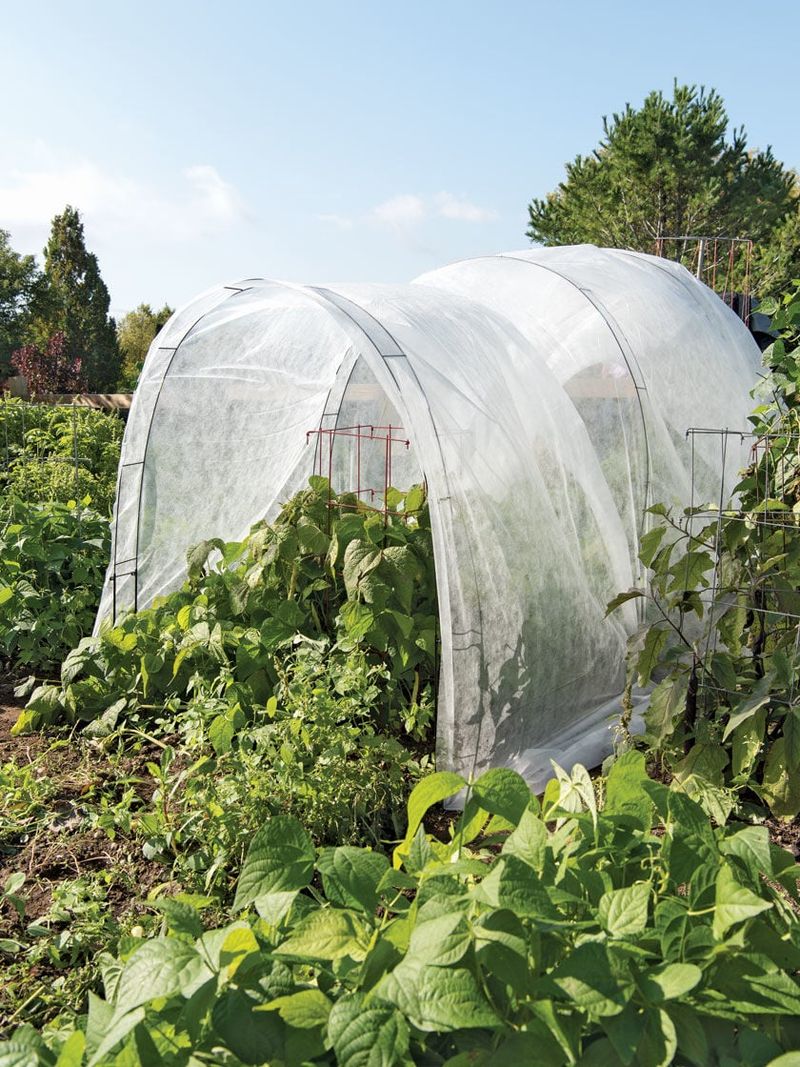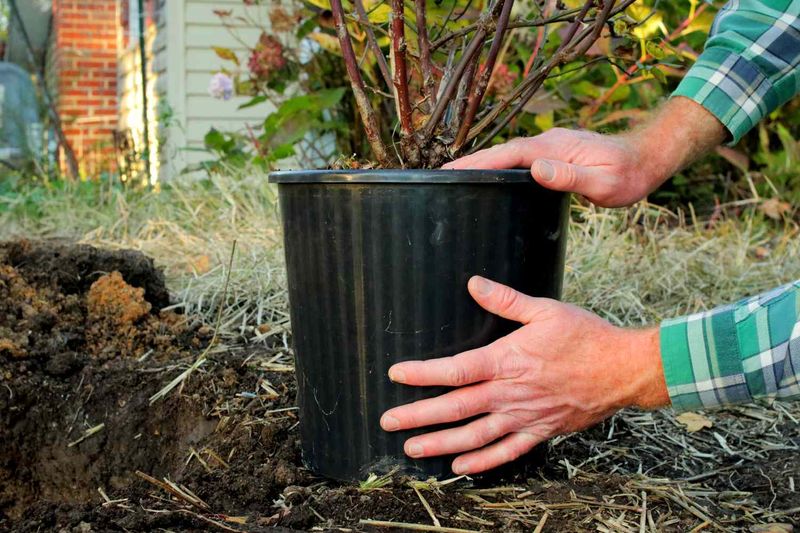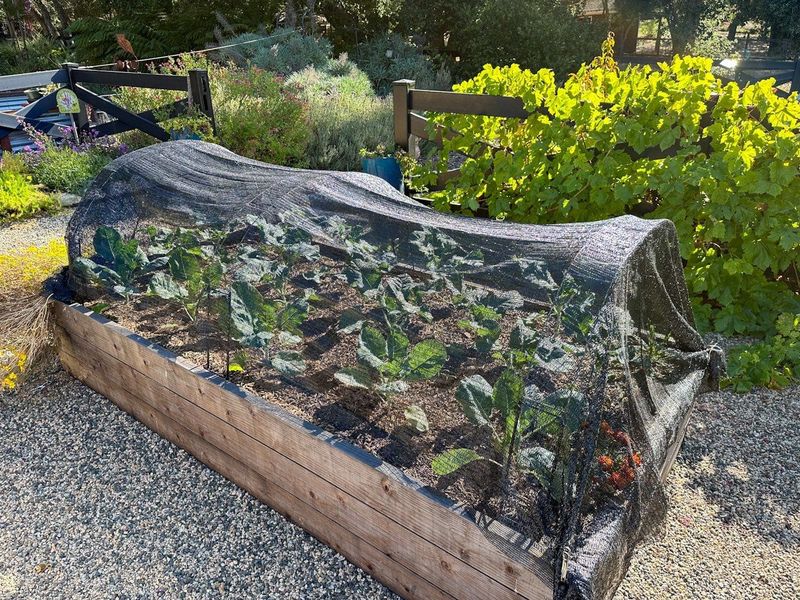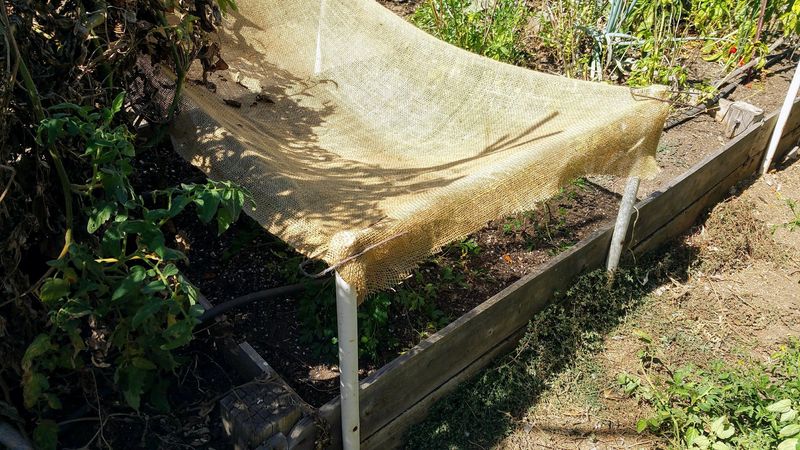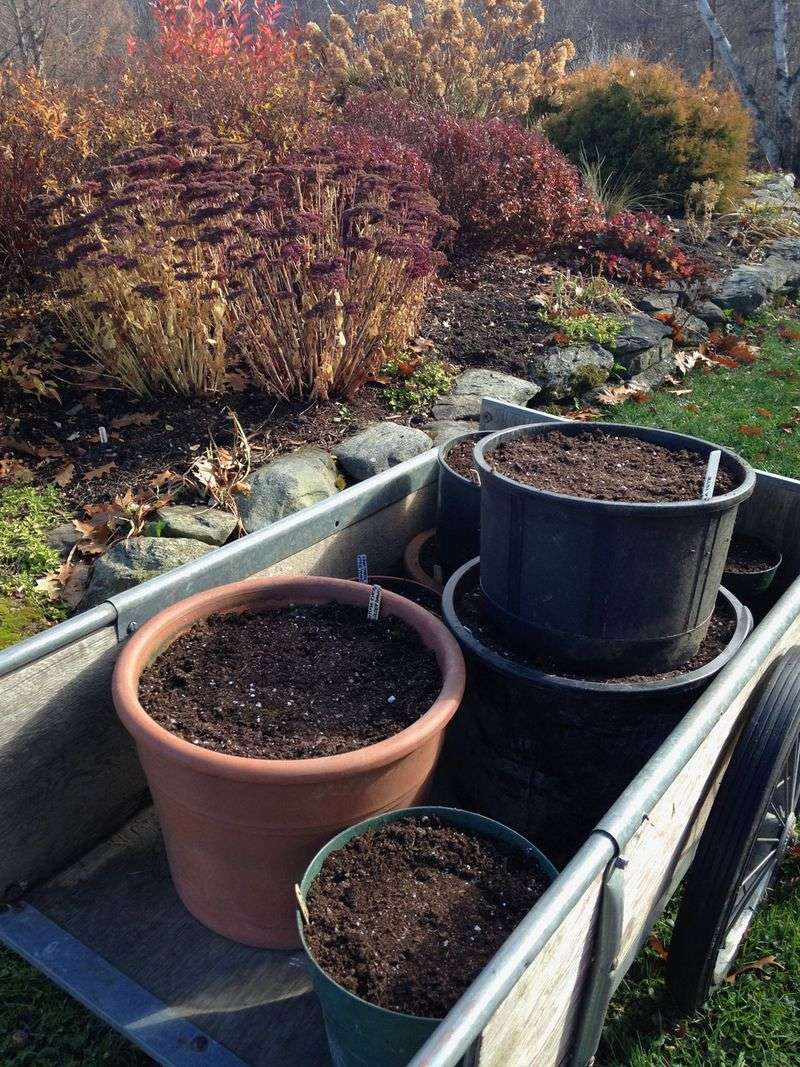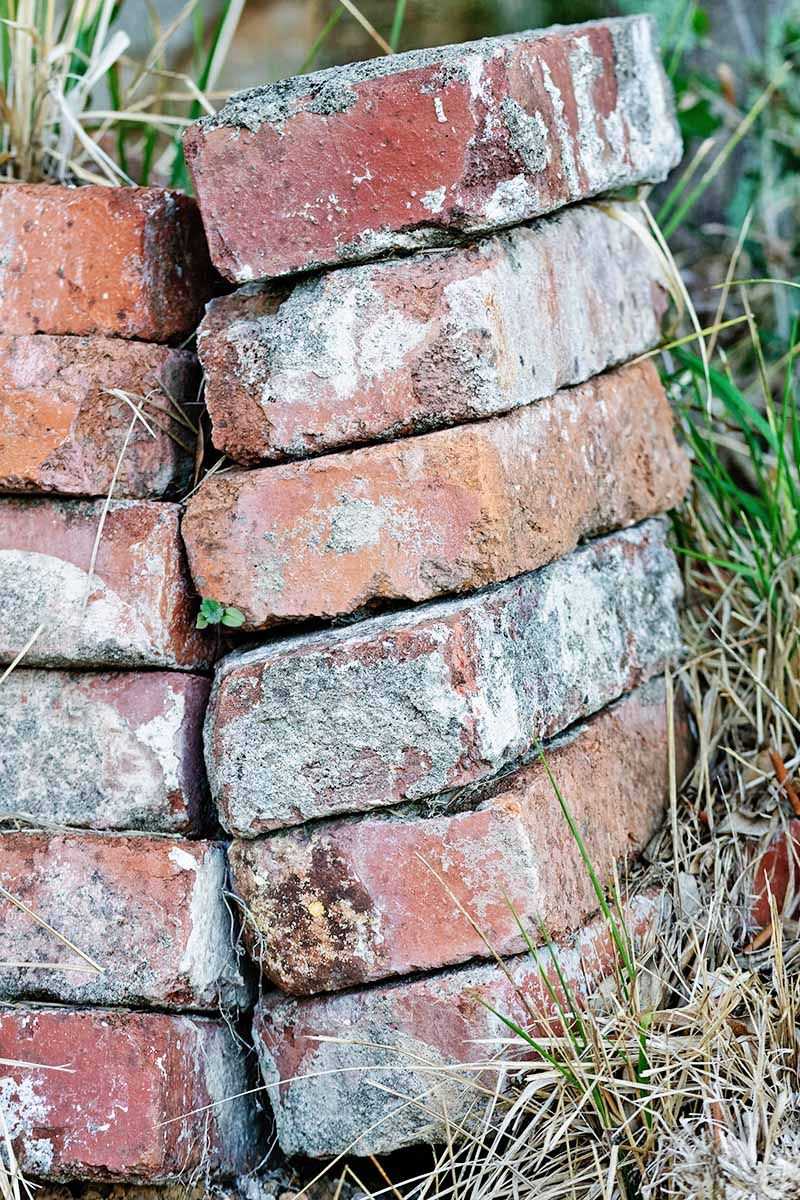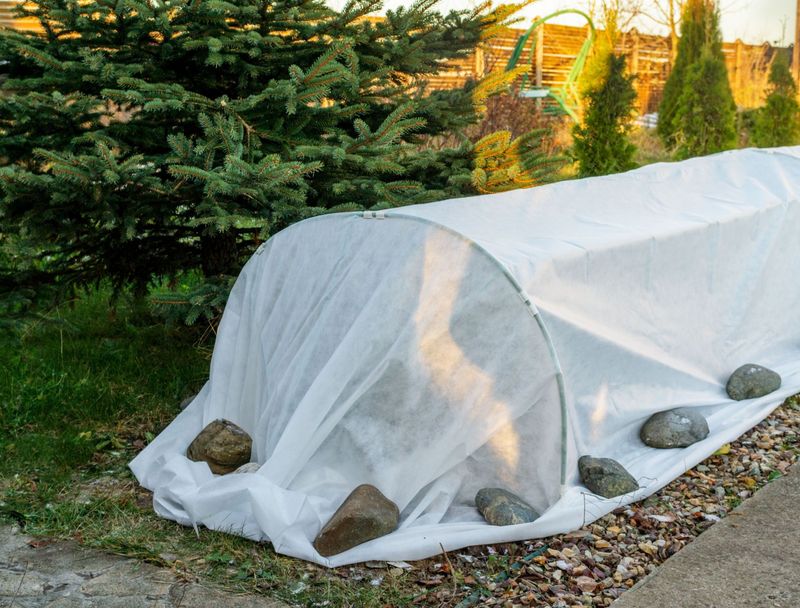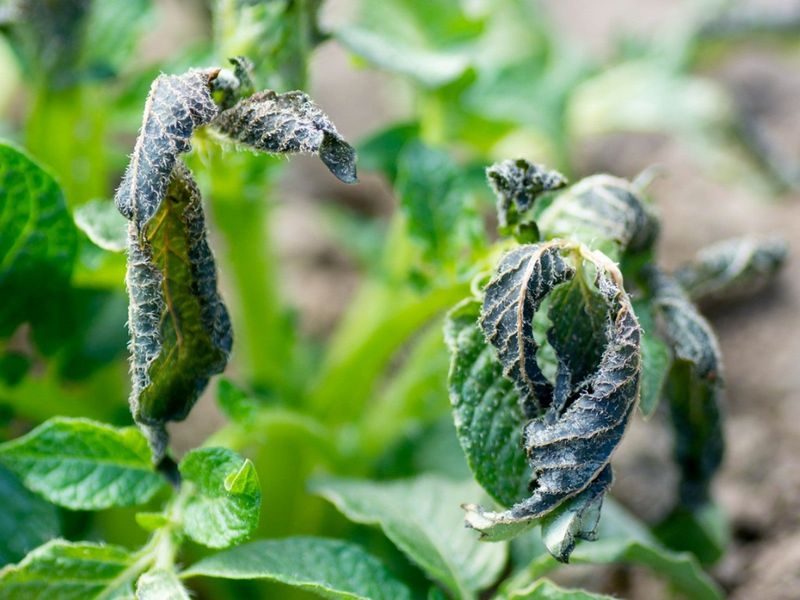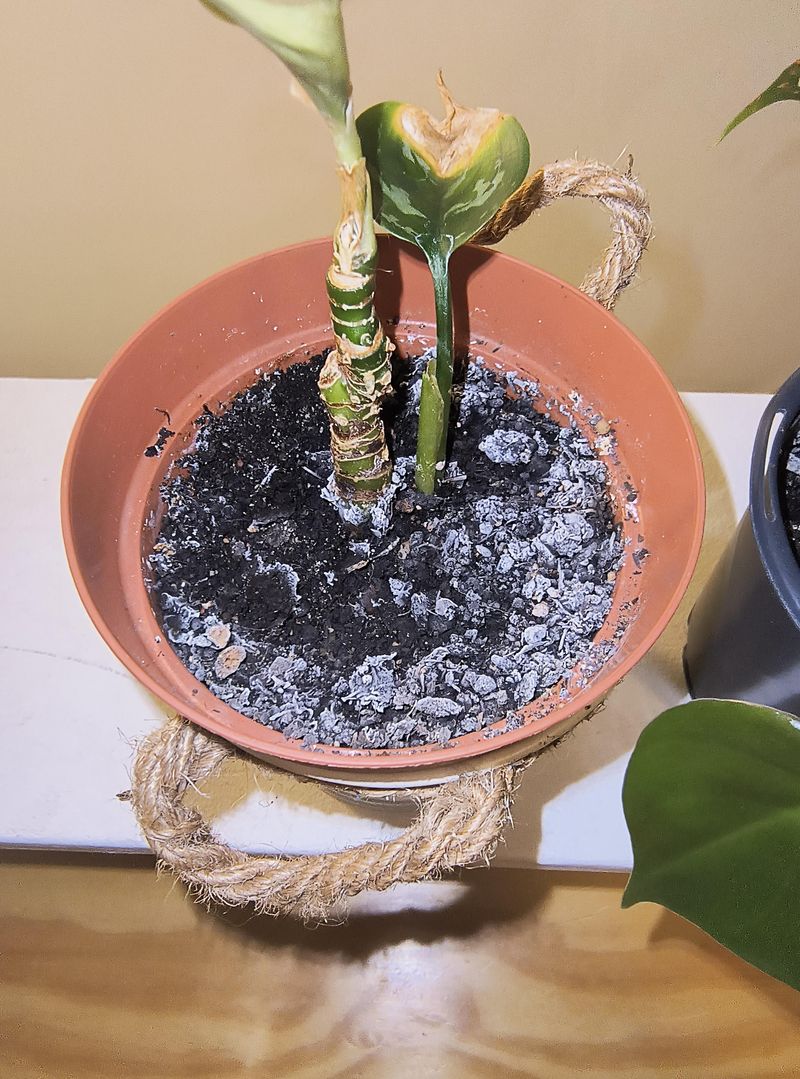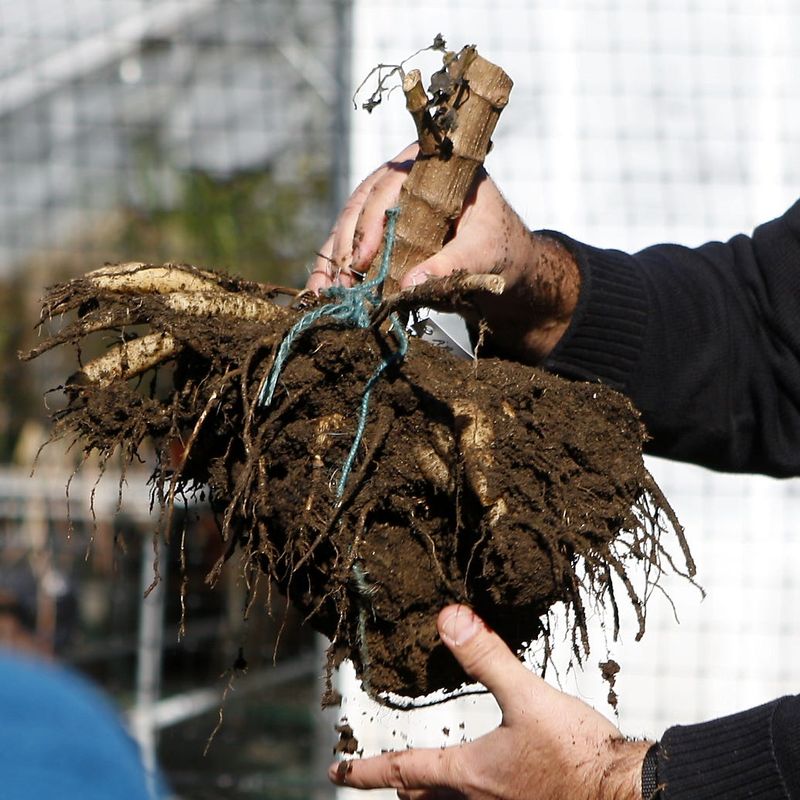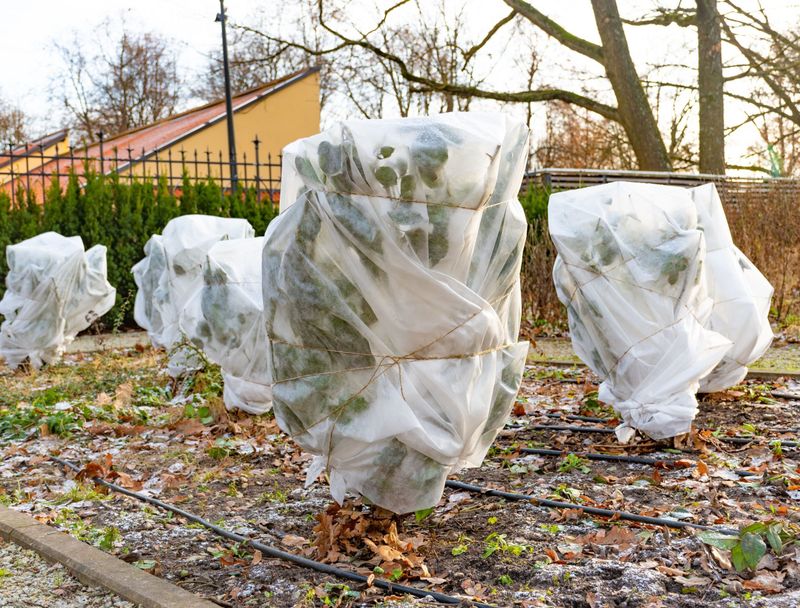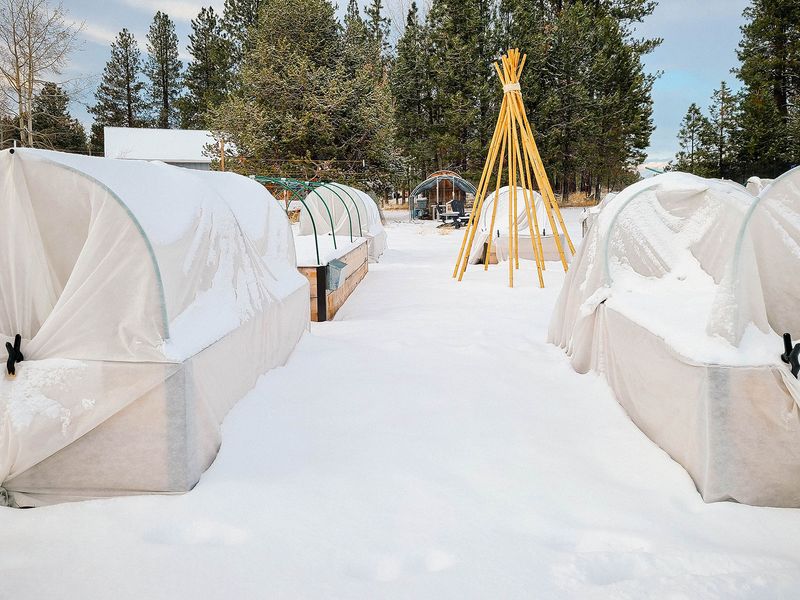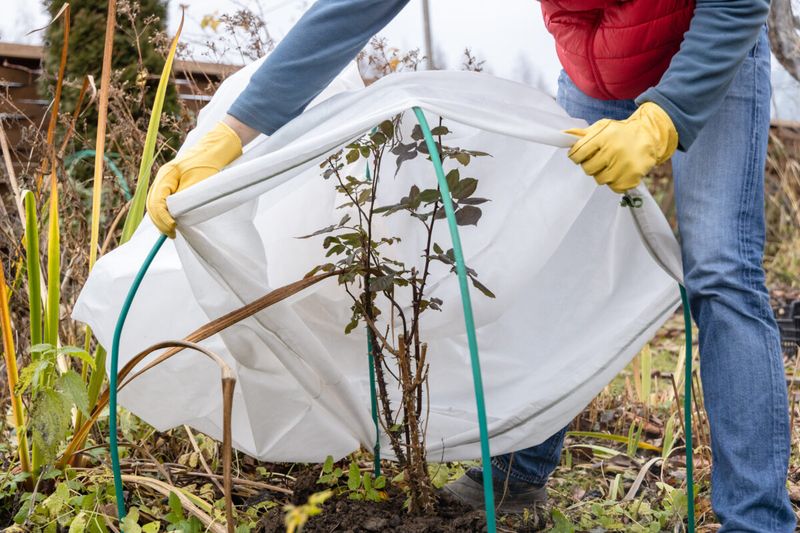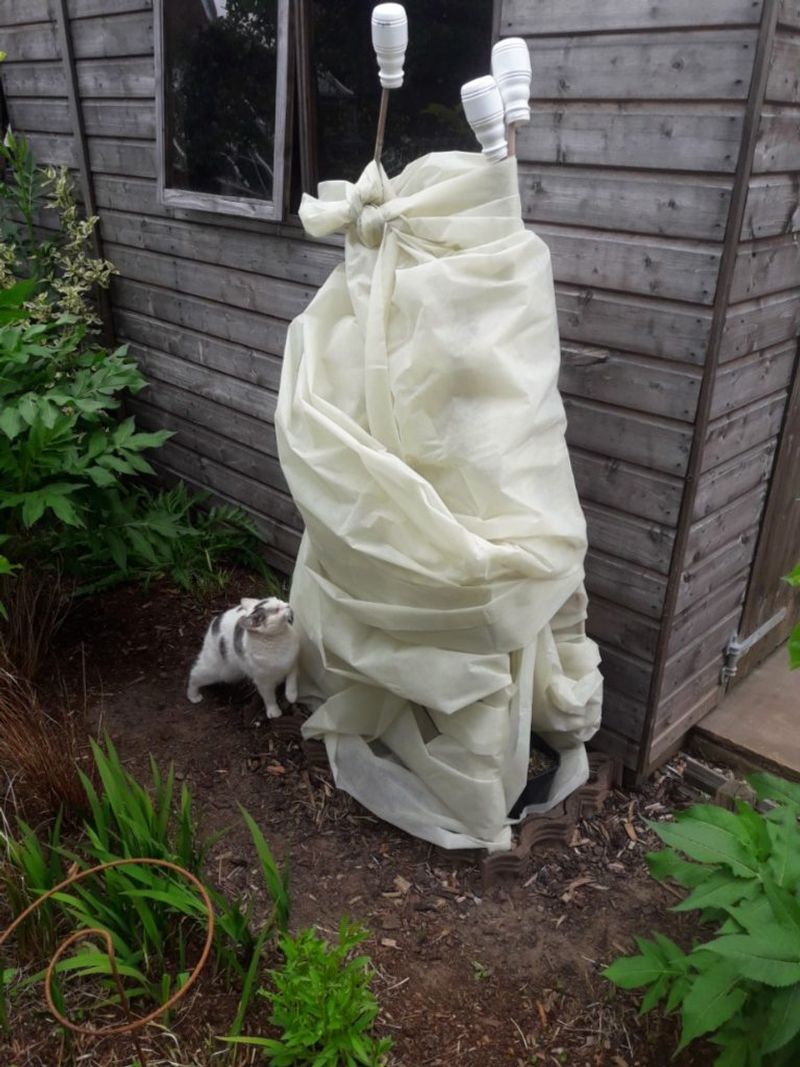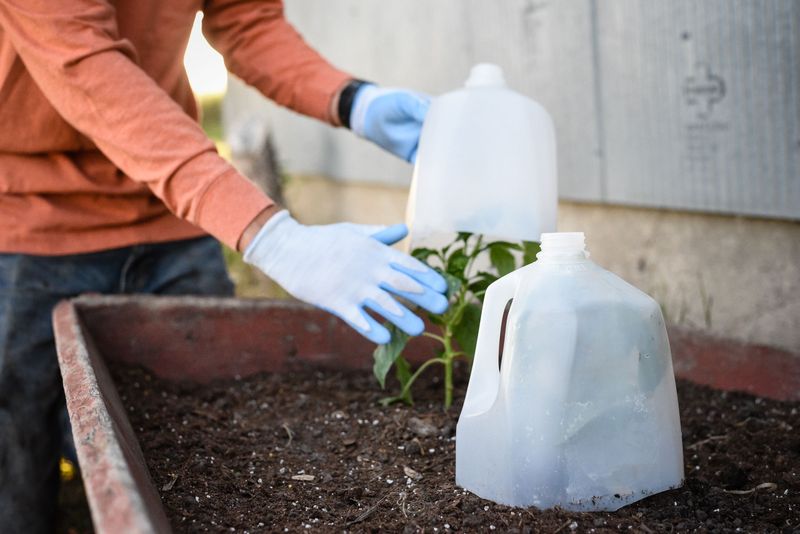When late frost threatens my garden, my heart races a bit. Will my tender sprouts survive the night? The weather can be such a sneaky foe. One minute it’s sunny, the next it’s freezing!
I’ve learned the hard way that a little preparation can save a lot of heartache. Some methods are easy and quirky, like covering plants with old sheets (which looks pretty hilarious in the moonlight), while others require a bit more work.
But let’s be honest, nothing beats that sweet relief when the frost passes and your plants are safe and sound, like winning a tiny garden battle!
1. Use row covers
Row covers are like a cozy blanket for the garden. These handy items, when draped over plants, offer a snug barrier against biting frost.
They allow light and moisture in while keeping cold air out. An unexpected advantage is their ability to protect against pests. Just be cautious not to trap too much heat during the day.
It’s a classy way to keep things in check without overdoing it. It’s like giving plants a warm hug they didn’t know they needed.
2. Cover plants with cloches
Cloches might just be the charming knights of the plant world. These bell-shaped covers sit over individual plants, creating a mini greenhouse effect.
It’s fascinating how something so simple can make a significant difference. But beware, these can sometimes overheat the plants if the sun decides to come out in full force.
They’re perfect for those who enjoy a little vintage touch in their gardens. Cloches are like tiny glass castles, shielding their green inhabitants with style.
3. Use frost blankets
Frost blankets are the unsung heroes when temperatures drop unexpectedly. These lightweight fabrics provide a breathable shield that insulates plants from the worst of the cold.
I find them incredibly handy, especially when the weather throws a last-minute curveball. The key is to ensure they’re securely fastened so they don’t blow away.
It’s astonishing to see how such a simple layer can offer such effective protection. Frost blankets are a safe bet for any gardener.
4. Plant in raised beds
Raised beds? Oh, they’re a gardener’s delight! They offer better drainage and increased soil temperature, creating a more supportive environment for plants.
The elevation helps protect roots from frost. Plus, they give the garden a neat and organized look. It’s like having a mini stage for plants to show off their growth.
And let’s not forget the ease of access. No more back-breaking bending! Raised beds combine practicality with a touch of class.
5. Bring pots indoors at night
Who would’ve thought that plants enjoy a bit of indoor comfort too? Bringing pots inside is a tried-and-true method to sidestep frost damage.
It’s like giving them a sleepover invitation. Just be sure they get ample light during the day. For those without much indoor space, even a garage or shed can work wonders.
This small effort can make a world of difference to those delicate greens. It’s a cool trick that saves a plant’s night.
6. Use mulch around plants
Mulch isn’t just about aesthetics; it’s a plant’s best buddy during cold snaps. By spreading it around, it acts as a barrier against temperature fluctuations.
It’s astonishing how a layer of wood chips, straw, or leaves can help retain soil warmth. Plus, it cuts down on weeds, which is always a win.
It’s like a fancy winter coat for your plants. Mulch is the unsung hero that quietly does its job without the need for applause.
7. Water plants in the afternoon
Afternoon watering is a neat trick that many might overlook. Moist soil retains heat better than dry soil, acting as an insulator against frost.
It’s impressive how such a simple act can make a difference. Just don’t go overboard. Too much water isn’t ideal.
By evening, the soil should be damp but not soggy. It’s a cool technique that works without needing constant attention.
8. Create windbreaks with fences or stakes
Wind can be a plant’s worst enemy, especially when combined with frost. Setting up fences or stakes can break the icy gusts, offering some reprieve.
It’s like putting up a protective shield. It’s not just functional, but it adds a bit of structure and character to the garden.
These barriers can be as simple or elaborate as you fancy. They’re a classy way to keep plants safe and sound.
9. Use hot caps over individual plants
Hot caps? They sound fancy, but they’re quite straightforward. Placing these over plants traps heat and moisture, creating a microclimate.
They’re perfect for those chilly nights when frost lurks. But remember, they can get a bit toasty if the sun shows up, so venting might be needed.
It’s like giving plants a little personal sauna to relax in. Hot caps are a nifty solution for those unpredictable spring nights.
10. Set up a cold frame
Cold frames are like mini-greenhouses, offering a warm escape for plants. They trap heat from the day and release it during the night, keeping frost at bay.
It’s cool how they manage to keep everything regulated. A simple design can go a long way in ensuring plant safety.
They’re ideal for those looking to give their garden a bit of sophistication. Cold frames are the perfect blend of form and function.
11. Use plastic sheeting to create temporary shelters
Plastic sheeting can be a lifesaver when frost threatens. Draping it over plants creates a barrier against the cold while trapping warmth.
It’s a straightforward method that doesn’t require much fuss. Just be mindful to secure it properly to prevent wind damage.
It’s not the most glamorous solution, but it gets the job done. Plastic sheeting is a quick fix for those frosty emergencies.
12. Move potted plants to sheltered areas
When frost is in the forecast, relocating potted plants is a smart move. Placing them in sheltered spots can shield them from the cold.
It’s a simple maneuver that can save plants from a frosty fate. Even a covered porch or a nook by the house can offer respite.
This little act of relocation can make a big impact. It’s a classy way to ensure plants remain snug and safe.
13. Employ garden fabric
Garden fabric is a handy tool in the war against frost. It’s breathable and lightweight, allowing light and moisture while keeping cold air out.
It’s impressive how something so thin can offer such robust protection. Securing it well is key to keeping plants safe.
It’s a bit like giving plants their own comfy, breathable duvet. Garden fabric is a simple yet effective method to keep those greens happy.
14. Use garden hoops for protection
Garden hoops add a touch of elegance to any plot. By draping fabric over these arches, you create a protective tunnel.
It’s a system that’s easy to assemble and disassemble as needed. They offer a cool way to fend off frosty conditions while adding visual interest.
The flexibility of this setup is a bonus, adapting to different garden needs. Garden hoops make safeguarding plants a cinch with a bit of style.
15. Provide bottom heat with heat mats
Heat mats are like a secret weapon beneath the soil. They provide gentle warmth from below, crucial for seedlings when frost bites.
It’s fascinating how such an understated gadget can have such an impact. Plug them in, set the temperature, and you’ve got a cozy setup.
They’re particularly useful in greenhouses or indoors. It’s like giving plants a warm seat to grow on. Heat mats are the unsung heroes in plant protection.
16. Install a weather-resistant tarp
A weather-resistant tarp is a versatile ally. It shields plants from frost, rain, and even snow. While not the prettiest sight, its effectiveness is undeniable.
Secure it well to prevent wind from wreaking havoc. It’s a straightforward method that offers peace of mind when the forecast is grim.
Think of it as a fortress for your plants, keeping them safe from nature’s whims. A tarp might not win beauty contests, but it’s a reliable defender.
17. Use large containers for better insulation
Large containers are more than just decorative pots; they offer superior insulation for roots. The extra soil acts as a buffer against chilling temperatures.
It’s a simple trick that offers an edge over smaller pots. Make sure these containers have good drainage to avoid soggy roots.
They’re a cool blend of function and aesthetics, giving plants a better chance against frost. Large containers are the go-to choice for those looking for practical elegance.
18. Group plants close together for warmth
Grouping plants is a smart tactic when frost looms. By placing them close, they share warmth and create a mini microclimate. It’s like giving them a group hug.
This simple strategy can make a significant difference in a plant’s survival chances. Just don’t crowd them too tight, as airflow is still important.
It’s a neat little trick that offers both protection and companionship. Plant grouping is a savvy way to stave off the cold.
19. Place bricks or stones near plants for heat retention
Bricks or stones might seem mundane, but they’ve got a trick up their sleeve. They absorb heat during the day and release it at night, providing a warm buffer against frost.
It’s a clever use of natural materials for plant protection. Position them strategically for maximum benefit.
They add a rustic charm to the garden while doing their job. Bricks and stones are a subtle, effective way to keep plants cozy.
20. Use old sheets or towels to cover plants
Old sheets and towels can be a gardener’s best friend in a pinch. Drape them over plants to protect against frost’s icy touch.
It’s a resourceful way to repurpose household items, perfect for last-minute frost warnings. Just remember to remove them during the day to let plants breathe.
This low-cost method adds a touch of personal flair to your garden. Sheets and towels prove that sometimes simple solutions are the most effective.
21. Overheating from excessive covering
Too much of a good thing can spell trouble. Over-covering plants can lead to overheating, especially on sunny days.
It’s crucial to find the right balance, allowing plants to breathe while staying protected. Excessive covering can trap heat, turning a cozy haven into a stifling sauna.
Pay attention to temperature swings and adjust covers accordingly. It’s a fine line between protection and suffocation. Keep an eye on the weather, and your plants will thank you.
22. Damage from sudden temperature swings
Temperature swings can be a plant’s worst nightmare. The shock of warm days followed by cold nights can cause stress.
It’s important to use flexible protection methods that can adapt to these changes. Sudden swings can lead to wilting or even death. Monitoring the forecast and adjusting plant care can mitigate these risks.
It’s a delicate dance to keep plants stable amid unpredictable weather. Be vigilant, and your garden will stay robust.
23. Moisture buildup causing rot
Moisture buildup is a sneaky villain. Excessive dampness can lead to rot, weakening plants and making them susceptible to disease.
Keeping covers breathable helps prevent moisture from becoming trapped. It’s a constant balancing act to maintain the right conditions.
Vigilance is key to avoiding the pitfalls of moisture-induced rot. With care, plants can stay healthy.
24. Disturbing plant roots when covering
Roots are a plant’s lifeline, and disturbing them can be detrimental. When placing covers, it’s crucial to be gentle and precise.
Uprooting plants can cause stress and hinder growth. It’s easy to overlook this detail in the rush to protect against frost.
A little care goes a long way in maintaining root integrity. Keep an eye on how covers are applied, and plants will stay grounded and strong.
25. Lack of airflow under covers
Airflow is essential for plant health, even under protective covers. Without it, plants can become stressed and stunted.
It’s important to allow for ventilation while still providing frost protection. Adjusting covers during the day can help keep air circulating.
It’s a simple step that can make a big difference in plant vitality. Embrace airflow, and your garden will flourish.
26. Heavy snow or rain on protective covers
Snow and rain can turn protective covers into a burden. The weight can crush plants, causing damage or breakage. It’s important to check covers regularly and remove excess buildup.
Reinforcing covers can prevent sagging and provide better support. It’s a proactive approach to minimize weather-related risks. With care, covers can remain a helpful ally, not a hindrance.
27. Unstable or poorly-secured covers
Unsecured covers are a recipe for disaster. Wind can easily displace them, leaving plants vulnerable to frost. It’s crucial to secure covers properly, using stakes or weights as needed.
Taking the time to ensure stability will pay off in plant health. It’s a small effort that yields significant rewards. With secure covers, plants can weather any storm.
28. Limited sunlight exposure
Sunlight is a plant’s best friend, but protective covers can limit exposure. It’s important to balance protection with access to light. Adjusting covers during the day can help maximize sunlight.
Finding this balance is key to healthy growth. With thoughtful adjustments, plants can enjoy the best of both worlds. Sunlight and protection go hand in hand for a thriving garden.
29. Using materials that trap too much moisture
Not all materials are created equal. Some can trap too much moisture, leading to mildew and rot. Choosing breathable covers is essential for healthy plants.
It’s a subtle but important distinction that can impact plant health. With the right materials, plants can stay dry and comfortable. Avoiding moisture traps is a simple step towards a robust garden.
30. Plant stress from rapid temperature changes
Rapid temperature changes are a challenge for any plant. The stress can lead to wilting or even death. It’s important to monitor conditions and adjust care accordingly.
Using flexible protection methods can help mitigate these effects. It’s a constant dance to keep plants stable and healthy. With care and attention, the garden can weather any storm.

